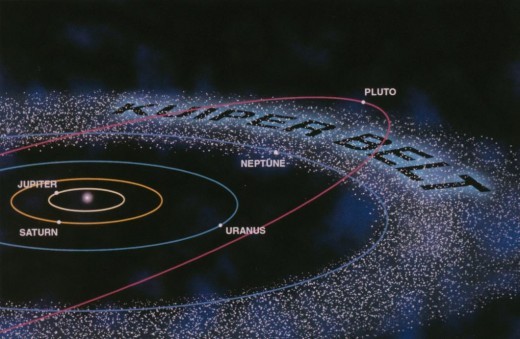
Comets: Their Cosmic Origins and Enigmatic Journey Through Our Solar System
Comets, with their fiery tails and dazzling appearances, have captivated human imagination for centuries. These celestial objects have been a source of wonder and intrigue, prompting scientists and astronomers to study their origins and trajectories within our solar system. In this comprehensive article, we will explore the fascinating world of comets, delving into their origins and the intriguing paths they follow as they journey through our cosmic neighborhood.
What Are Comets?
Comets are celestial objects composed primarily of ice, dust, gas, and small rocky particles. They are often likened to “dirty snowballs” due to their icy cores embedded with various other materials. Comets are distinct from asteroids, which are composed mostly of metal and rock.
The Birth of Comets: Their Origins
1. The Oort Cloud
The birthplace of most comets in our solar system is believed to be the Oort Cloud. This hypothetical region, located at the outer fringes of our solar system, is a vast reservoir of icy bodies. It is named after Dutch astronomer Jan Oort, who proposed its existence in the 1950s. The Oort Cloud is thought to be home to trillions of comets, each in a deep freeze until some external force disturbs their orbit.
2. The Kuiper Belt
Another source of comets, particularly short-period comets, is the Kuiper Belt. This region lies beyond Neptune and is a disk-shaped area populated with icy objects and small celestial bodies. Unlike the Oort Cloud, the Kuiper Belt is closer to the Sun and contains comets that have shorter orbital periods, often less than 200 years.
The Journey of Comets Through Our Solar System
Comets follow distinctive trajectories as they journey through our solar system, and their appearances can vary widely based on their orbits. Here is an overview of the typical journey of comets:
1. Approach
When a comet is perturbed from its distant orbit, it begins a journey towards the inner solar system. As it approaches the Sun, the increasing solar radiation causes the comet’s icy nucleus to sublimate, releasing gas and dust into space. This process forms a glowing coma and a luminous tail, both of which become more prominent as the comet gets closer to the Sun.
2. Perihelion
The point in a comet’s orbit when it is closest to the Sun is known as perihelion. At this stage, comets can be visible from Earth and can exhibit spectacular tails that stretch across the night sky. The tail of a comet always points away from the Sun due to the solar wind and radiation pressure.
3. Departure
After reaching perihelion, comets begin their journey away from the Sun. As they move farther from the Sun’s warmth, the activity in their comae and tails diminishes. Eventually, comets return to the frigid depths of space, where they await the next perturbation that will send them on another journey toward the Sun.
Comet Types and Characteristics
Comets are categorized based on several characteristics:
1. Short-Period vs. Long-Period Comets
Short-period comets have orbits that take them around the Sun relatively quickly (less than 200 years), often originating from the Kuiper Belt. Long-period comets, on the other hand, have orbits that can take centuries or even millennia to complete, typically originating from the Oort Cloud.
2. Comet Nucleus
The nucleus of a comet is its solid, icy core. It can range in size from a few kilometers to tens of kilometers in diameter.
3. Coma and Tail
When a comet approaches the Sun, it develops a glowing coma, a cloud of gas and dust surrounding the nucleus. The tail, composed of gas and dust, streams away from the nucleus, always pointing away from the Sun due to solar pressure.
Cometary Exploration and Research
Several missions have been launched to study comets up close, providing valuable insights into their composition and characteristics. Notable missions include NASA’s Stardust, Deep Impact, and the European Space Agency’s Rosetta, which successfully landed a probe on the comet 67P/Churyumov-Gerasimenko in 2014.
Conclusion
Comets, these enigmatic celestial wanderers, have a profound influence on our understanding of the solar system’s history and evolution. Their journeys from the distant, frozen realms of the Oort Cloud and Kuiper Belt to the inner solar system offer windows into the conditions and processes that prevailed during the formation of our cosmic neighborhood. As we continue to explore and study these captivating cosmic travelers, we can expect to uncover more of the secrets they hold about the origins of our solar system and the universe itself. Comets, with their ever-changing beauty and mysteries, will undoubtedly remain a source of fascination for astronomers and stargazers alike.
